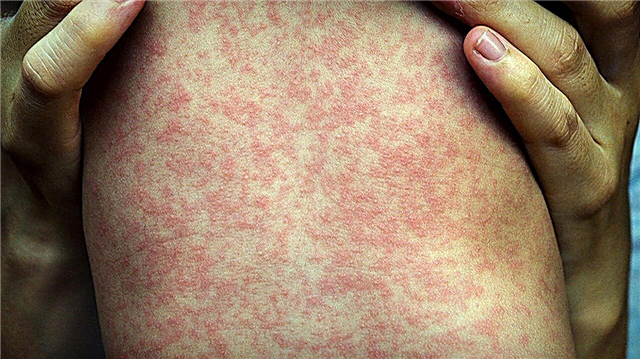
Radish has been known for a long time as a powerful medicine. It is difficult to accurately determine its origin, but history knows that many ailments were healed with this wonderful root crop even in Ancient Egypt. From there, the fruits came to the Greeks and immediately fell in love with the great doctors of this ancient state. Legends say that it was worth its weight in gold, for a plant they gave as many coins as it weighed itself. Radish came to Russia from Asia, where it grows wild.
Adults are advised to take radish for a variety of diseases. But we will talk about the use of the plant in the treatment of children.

Useful and medicinal properties
White, black, green, brown, pink, purple. Radish can be so different. Each type of culture can be used for food, including for treatment. It has a powerful anti-inflammatory effect, quickly relieves swelling, destroys pathogenic bacteria no worse than an expensive pharmacy antibiotic.

It is recommended to take it for parasitic ailments, for a viral infection, for sinusitis, sore throat, and in combination with honey, it is an effective cough medicine. The plant is used for kidney diseases and some ailments of the gastrointestinal tract.
By the way, honey significantly enhances the beneficial properties of the plant. It also helps to obtain radish juice, which can hardly be called juicy. The black radish has the strongest medicinal effect. White and green radish have the mildest effect.
And now a video of how to make cough syrup from black radish and honey.
Harm and contraindications
In most cases, radish treatment is not contraindicated for children, but it requires adherence to certain important rules. Black radish, as we have already found out, is the most powerful, but it is for this reason that green or white radish is often recommended for children. They are no less useful, they just act much softer.
In any case, it is not recommended to give radish to children under three years old, since the plant sap is quite aggressive on mucous membranes. On the Internet today you can find information that green and white radishes can be given to children under one year old. In fact, it's not worth the risk. There are other restrictions on the use of the plant:
- Radish is contraindicated in children with a diagnosis of gastritis confirmed by doctors.
- It is not necessary to treat this root vegetable and children who have problems with the pancreas, duodenum, ulcers of any organ in the digestive system.
- Doctors do not recommend radish to children with thyroid diseases.
- Do not give the plant for medicinal purposes to children with heart disease, including congenital defects of this organ.
If a child can take a radish, then it is important to remember that too frequent consumption of a vegetable can cause the development of a depressive state.

Allergic reactions to the root vegetable are rare, but quite possible. Much more often children are allergic to honey, which is often combined with radish. Therefore, parents will need to be attentive to the child in the process of such treatment and the willingness to immediately stop alternative therapy if the harm from it is more than good.
Video recipe for the treatment of bronchitis and radish cough.
It is advisable to discuss this possibility with your pediatrician before using this plant to treat a child. Doctors treat this vegetable well, traditional medicine fully recognizes the powerful effect of radish, which can be said about only a few traditional medicine. For this reason, rejection on the part of the doctor should not arise, unless, of course, he finds direct contraindications to the use of the plant in your child.

Operating principle
The principle of action of this unique natural medicine can be understood if you know what exactly is included in the root vegetable. And he is rich and diverse. First of all, these are natural antibacterial substances, among which the undisputed leader is a special enzyme - lysozyme, it is considered the worst enemy of most known bacteria.
Phytoncides and carotenes lower cholesterol levels, normalize blood circulation and provide anti-inflammatory and decongestant effects. Vitamin C (ascorbic acid), A, PP and a number of B vitamins make the root vegetable a good medicine for improving metabolic processes in the body. And the incredibly high level of iron, potassium, magnesium helps to overcome a variety of infectious diseases due to the fact that they increase immunity.

How to give?
Usually radish is used for medicinal purposes in the form of juice, which can be obtained from the root crop in a variety of ways. The most popular is to grate and squeeze the pulp. Sometimes the radish pulp is passed through a meat grinder and then the resulting mass is squeezed through several layers of gauze.

For internal use for colds and coughs, the radish juice is mixed with honey or milk and allowed to drink. Pure, undiluted juice is applied externally, it is rubbed with the chest with severe bronchitis. Such procedures, in combination with wrapping after wiping, promote the rapid discharge of sputum with a dry, unproductive cough.


Radish juice is a good base for nasal drops for sinusitis, it perfectly cleans the sinuses of bacteria, pus and mucus. And root vegetable juice added to a gargle solution is an excellent remedy for sore throat.

Radish can be given stewed or baked with sugar for food, but only to children after a year. Prepared in this way, with the obligatory preliminary soaking, it will not have any irritating effect on the mucous membranes of the digestive tract and will be useful for digestion and strengthening the immune system.

Recipes and methods of application
With black radish
This plant is very effective in treating coughs. The root crop will need to be washed, cut off the "top" of the plant, and through it to make a depression in the radish. It is necessary to put honey in it so that the beekeeping product fills no more than half of the space.
On top of the "stuffed" radish should be covered with its own previously cut part and let it brew for at least 4-6 hours. The juice that is released in the process will be the drug.
Baby cough syrup can be made at home by peeling the root vegetable and grating it. A blender will do. Squeeze the gruel through 2-3 layers of gauze, add two teaspoons of honey to the resulting juice. Once the honey is completely dissolved, everything should be carefully moved.


The syrup is given to children aged 3-4 years and older to drink a teaspoon 2-3 times a day. Children over 7 years of age can double the dose. Store the finished drug in the refrigerator for no more than three days.
To prepare a compress with a radish, one root vegetable needs to be peeled, chopped, and then passed through a fine grater. The resulting mass should be spread in a small layer with a spoon on a strip of gauze, covered with another layer of material and applied to the back or chest, excluding the heart area, having previously lubricated the skin with baby cream or vaseline oil so that there are no skin burns. The procedure with such a compress should not exceed 10 minutes, then the gruel is removed, the skin is wiped with water and covered with a warm knitted scarf.


With white radish
One root crop must be washed, peeled and grated. Squeeze the gruel through the cheesecloth and add a little honey to the juice. It is necessary to insist such a remedy for about 5 hours, then such a syrup can be given to a child in small portions (no more than a teaspoon at a time) for coughing, whooping cough, bronchitis. It is not worth storing white radish syrup for more than a day.
The white plant can also be baked in the oven after being cut into small cubes. It is not necessary to use honey in this recipe, so this method of preparation is suitable for children with allergies to bee products. Instead of honey, the radish is sprinkled with sugar, and when baked, the root vegetable will give a large amount of sweet syrup. Such syrup in a chilled form after straining can be given to a child a tablespoon three times a day.


With green radish
This type of root vegetable perfectly helps a child to cope with a severe cold. The plant must be washed and peeled, cut into small cubes. The resulting pieces can be folded into a jar or other glass container, squeezed more tightly with a spoon and add a couple of tbsp. spoons of honey.
Insist for two hours under the lid, then mix the contents of the jar thoroughly, close it again and leave for at least 8 hours. It is better to prepare such a drug at night so that the medicine is ready in the morning.
Syrups obtained from the green variety can be given to a child more often than similar preparations from black roots. A teaspoon up to 6-7 times a day.
Tips
- If a decision is made to start an alternative treatment, feed the root vegetable for the first time before noon, so that you have time to observe your child and see if he has any allergic reactions to the use of this plant. The most common manifestations of "rejection" by the body of such a drug - rash and upset stools.
- For the preparation of medicines that are planned to be used externally (for compresses for viral sinusitis, for example), it is better to take black roots. They contain the maximum amount of natural antibiotic substances.
- You can prepare nasal drops for a runny nose or sinusitis both from black radish and from a white variety. After pressing, the juice should be diluted 1: 3 with aloe juice to avoid burns to the mucous membrane. Concentration means one part radish juice and three parts aloe juice.
- In all cases when treatment through instillation is planned, you should definitely consult a doctor. The inept and unauthorized use of such a powerful agent, as well as exceeding the permissible concentration of the resulting solution, can cause swelling of the nasopharynx, larynx, and a strong allergic reaction.
- Experienced traditional healers do not recommend buying radishes from supermarkets. It is better if the root crop is grown by you on your own, on your plot or in the country, in extreme cases, the plant can always be bought at the green market from summer residents or farmers.
- To enhance the effect of the prepared radish remedy, in addition to honey, it is advisable to add cinnamon and cabbage juice to the cough syrup.
- To make the radish juice as much as possible, do not forget to dip the tail of the root crop into the water.
- Syrups can be diluted with juices and water to make it easier for the child to drink this medicine. Usually, no resistance from the side of children arises when taken, in combination with honey or sugar, the radish loses its characteristic bitterness and astringency. But children, as we know, are different, and therefore we will not exclude the option of refusing to drink such a drug.
- You can not make compresses on the sinuses if sinusitis is of bacterial origin. Warming up (and the plant has such a property) will only aggravate the situation and contribute to a more intensive reproduction of pathogens.
- In no case should the course of treatment with a radish exceed one week.

Reviews
Numerous reviews have been written about the use of radish in the treatment of mother's children on various Internet forums, most of which are positive. Folk remedies based on this root vegetable really quickly and effectively help children cope with coughs. Many parents note that an improvement in the child's condition occurs already on the second day after the start of admission.
Many experienced parents recommend adding rye flour to compresses on the chest, so the radish acts more gently and reduces the likelihood of getting burns.

Only a small percentage of moms and dads note that the child developed allergies and bronchospasm after taking radish syrup. Only a few claim that their baby flatly refused to drink the sweet "medicine" because he does not like the taste.




